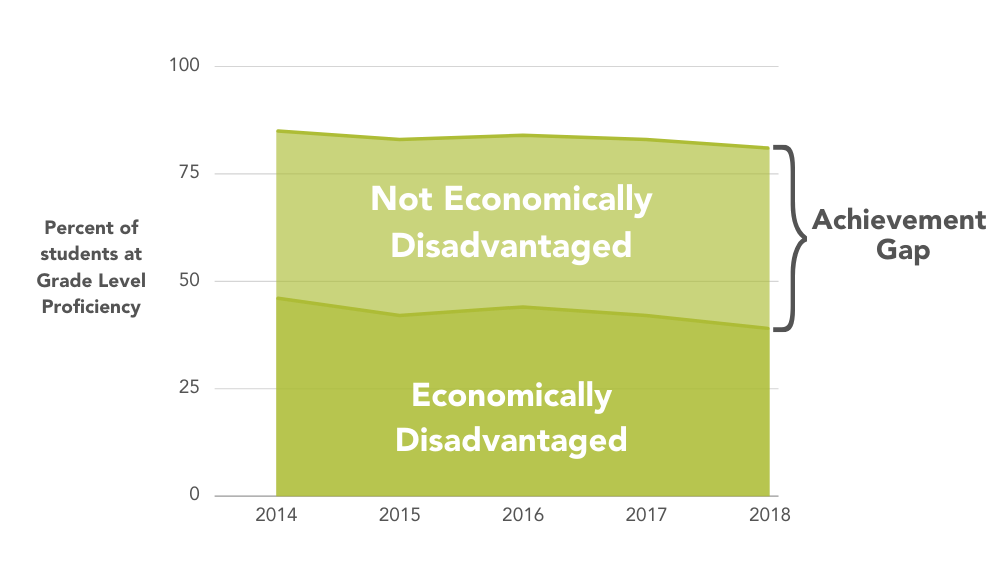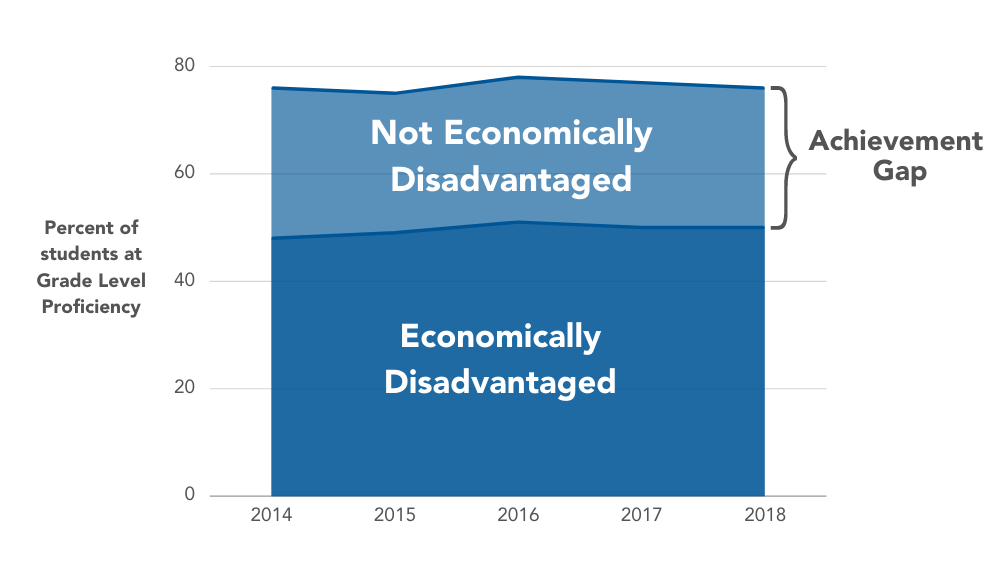Exploring Achievement Gaps in Asheville
Knowledge Check: What is an achievement gap?
Income-related performance gap in Asheville City Schools

In 2018, Buncombe county exposed an alarming socioeconomic status-related achievement gap in Asheville City Schools: only 39% of economically disadvantaged students were performing at Grade Level Proficiency compared to their more affluent peers, of which 81% were on track.
Income-related performance gap in Buncombe County Schools

Students in Buncombe County Schools did not fare much better. In 2018, only 50% of low-income students were on track compared to 76% of their peers.
Why is there an achievement gap between students of different socioeconomic statuses?
A KIDS COUNT Special Report posits that “for low-income children in particular, a ‘readiness gap’ fuels what has become known as an achievement gap."
This readiness gap includes things like feeling safe, having family support, feeling excited about learning, and having positive social interactions with their peers.
- Children living in poverty more often than not live in unsafe neighborhoods.
- Because school budgets are determined by property taxes, children who grow up in poverty are more likely to attend schools in districts with overwhelmed teachers, inadequate facilities, and fewer resources.
- Out of school, they face issues like food-insecurity, unreliable internet access to complete assignments, and they often do not have the benefit of parental involvement due to longer, lower wage working hours.
- Living in poverty can also prevent students from participating in academic or sports extracurriculars, isolating them from their peers and leading to increased rates of mental and physical health issues.
School year learning loss for economically disadvantaged students is only compounded further over the summer months. A study by RAND found that "on average, all students lose skills, particularly in mathematics; however, summer learning loss disproportionately affects low-income students, particularly in reading.” By the fifth-grade, summer learning loss can leave low-income students a striking 2.5-3 years behind their middle-income peers.